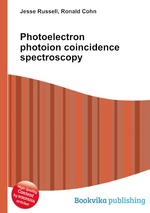Photoelectron photoion coincidence spectroscopy
Jesse Russell Ronald Cohn
бумажная книга
High Quality Content by WIKIPEDIA articles! Photoelectron photoion coincidence spectroscopy, PEPICO for short, is a combination of photoionization mass spectrometry and photoelectron spectroscopy. Gas phase sample, i.e. isolated molecules are ionized by incident vacuum ultraviolet (VUV) radiation. In the ensuing photoionization, a cation and a photoelectron are formed for each sample molecule. The mass of the photoion is determined by time-of-flight mass spectrometry, whereas, in current setups, photoelectrons are typically velocity map imaged onto a position sensitive detector. Electron times-of-flight are three orders of magnitude smaller than ion ones, which means that the electron detection can be used as a time stamp for the ionization event, starting the clock for the ion time-of-flight analysis. In contrast with pulsed experiments, such as REMPI, in which the light pulse must act as the time stamp, this allows for the use of continuous light sources, e.g. a discharge lamp or a synchrotron light source. No more than a few ion/electron pairs are present simultaneously in the instrument, and the electron/ion pairs belonging to a single photoionization event can be identified and detected in delayed coincidence.


